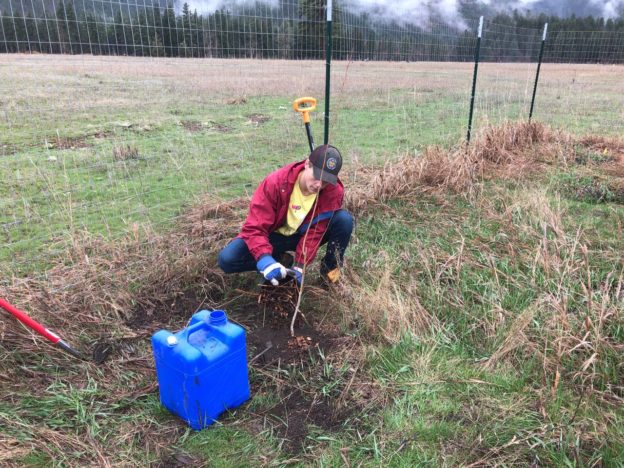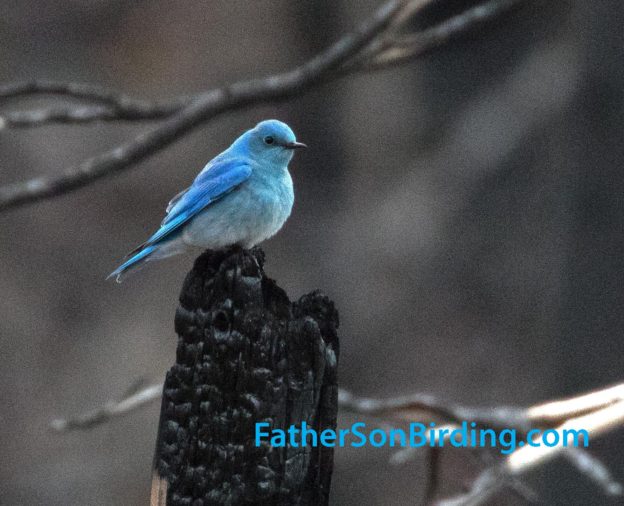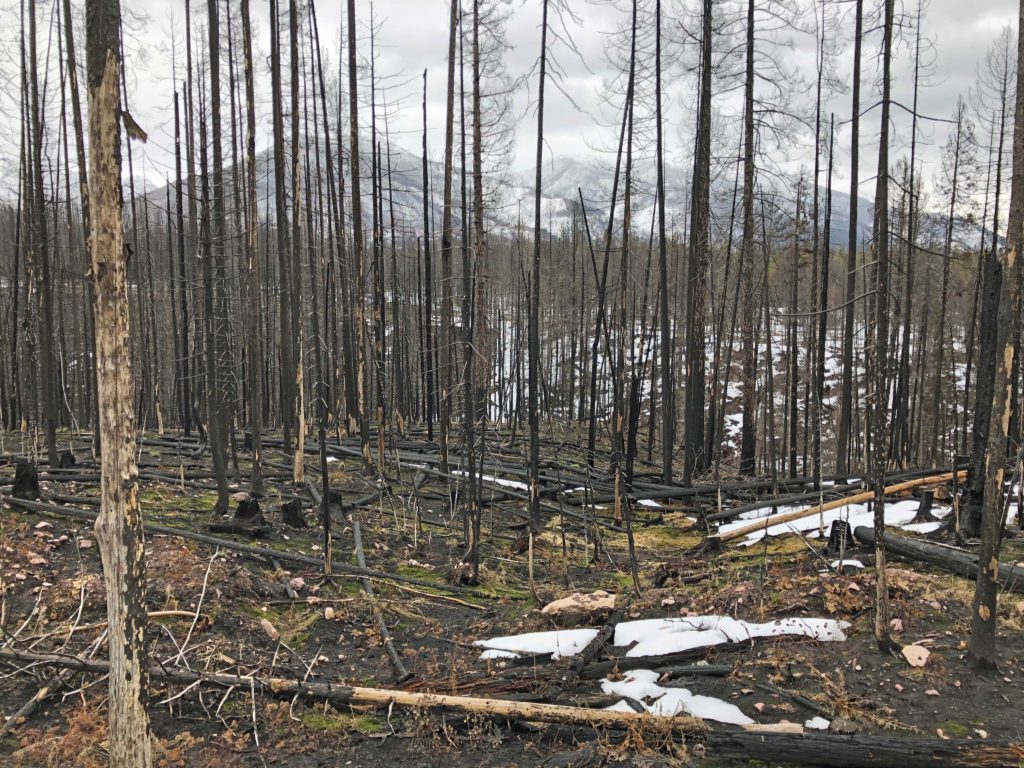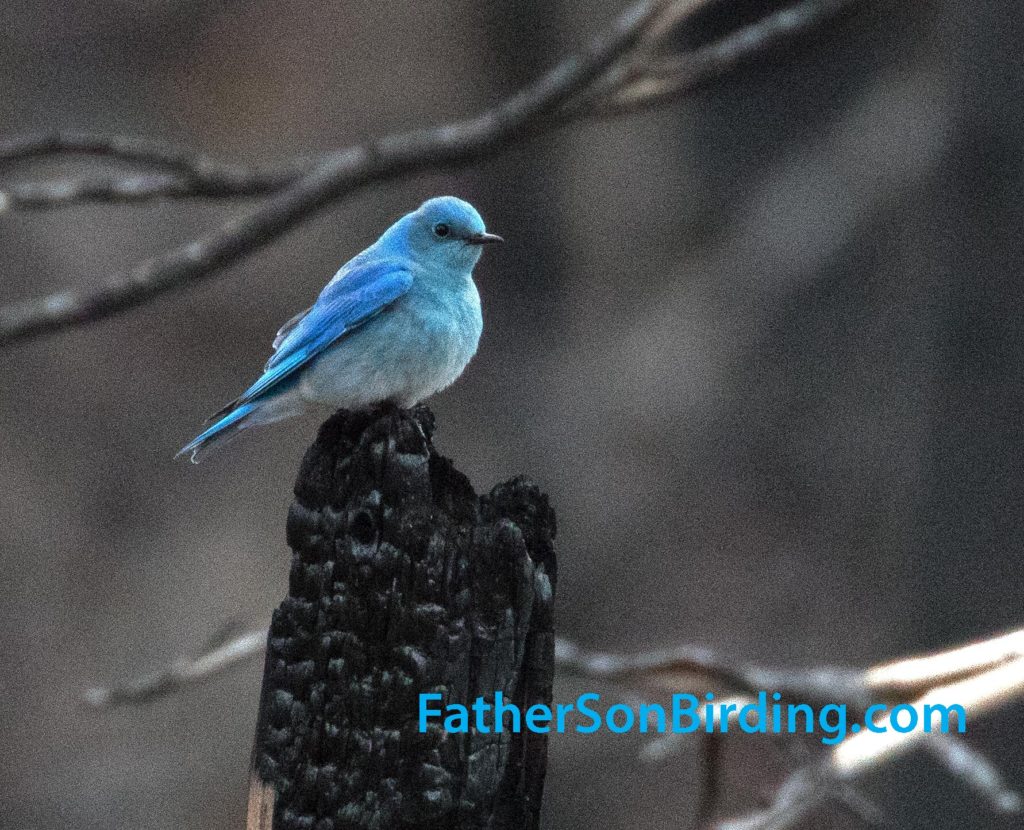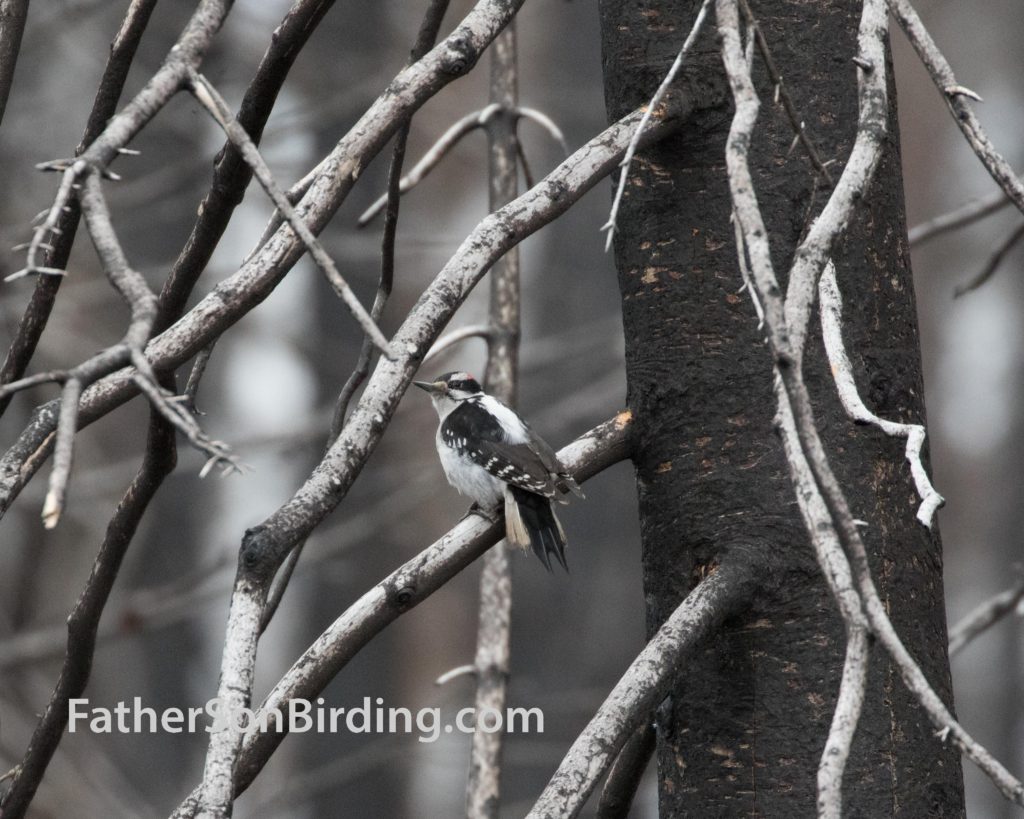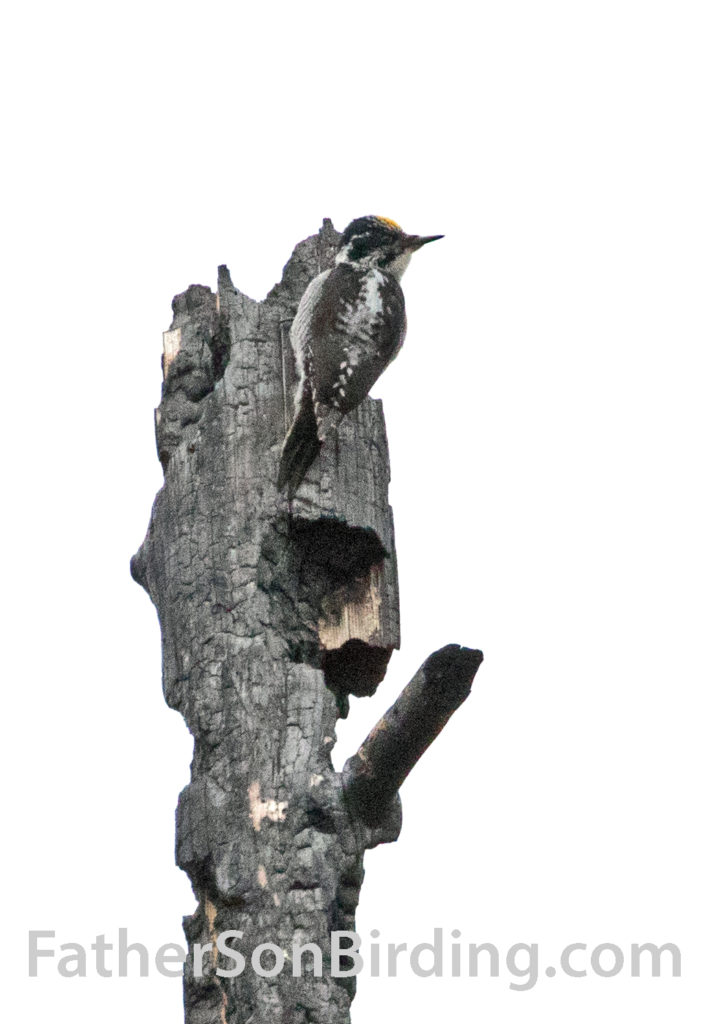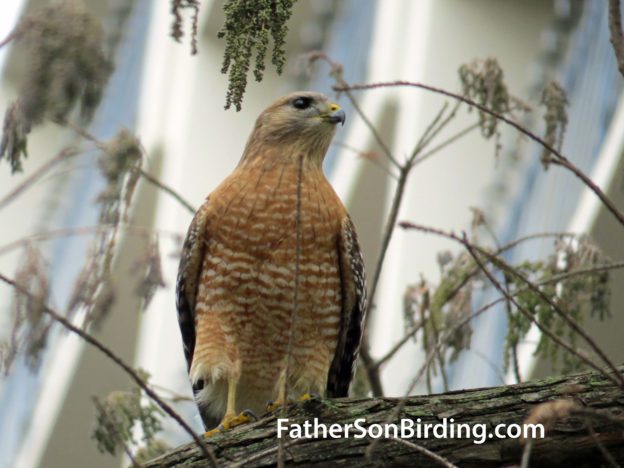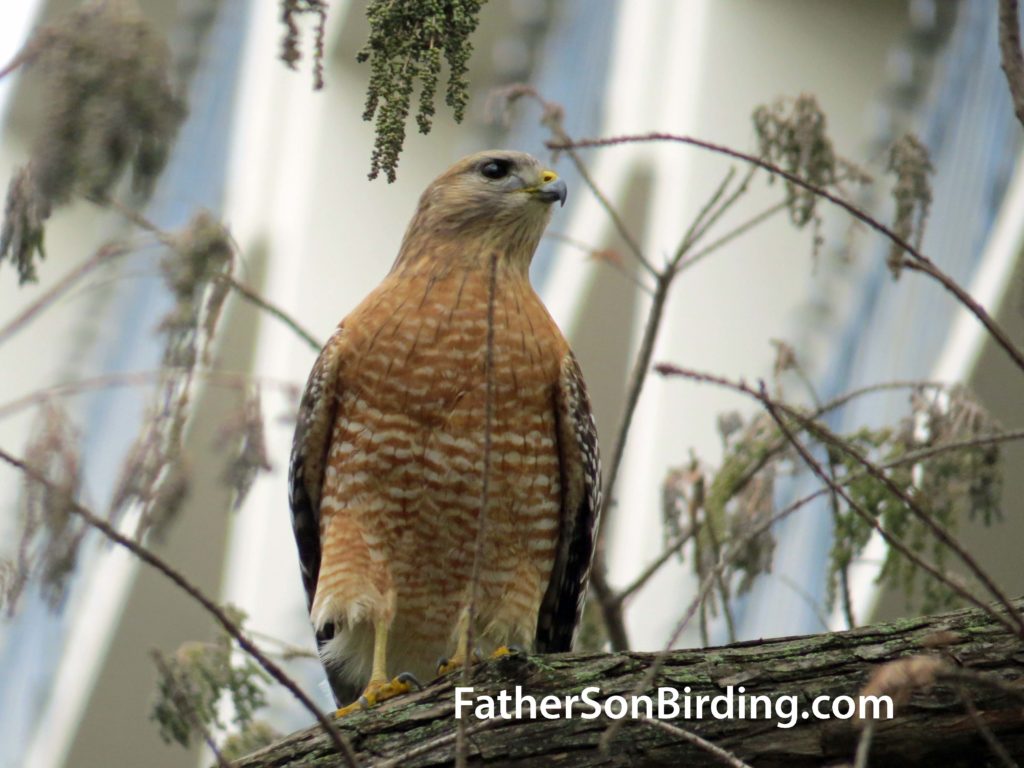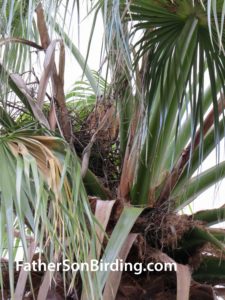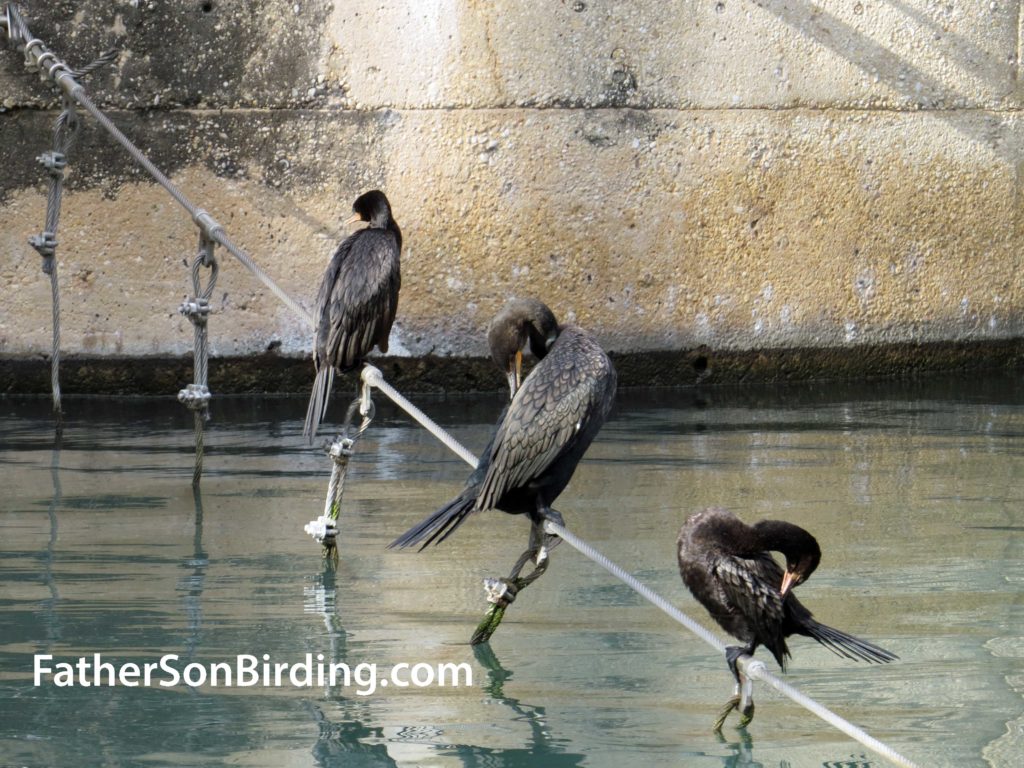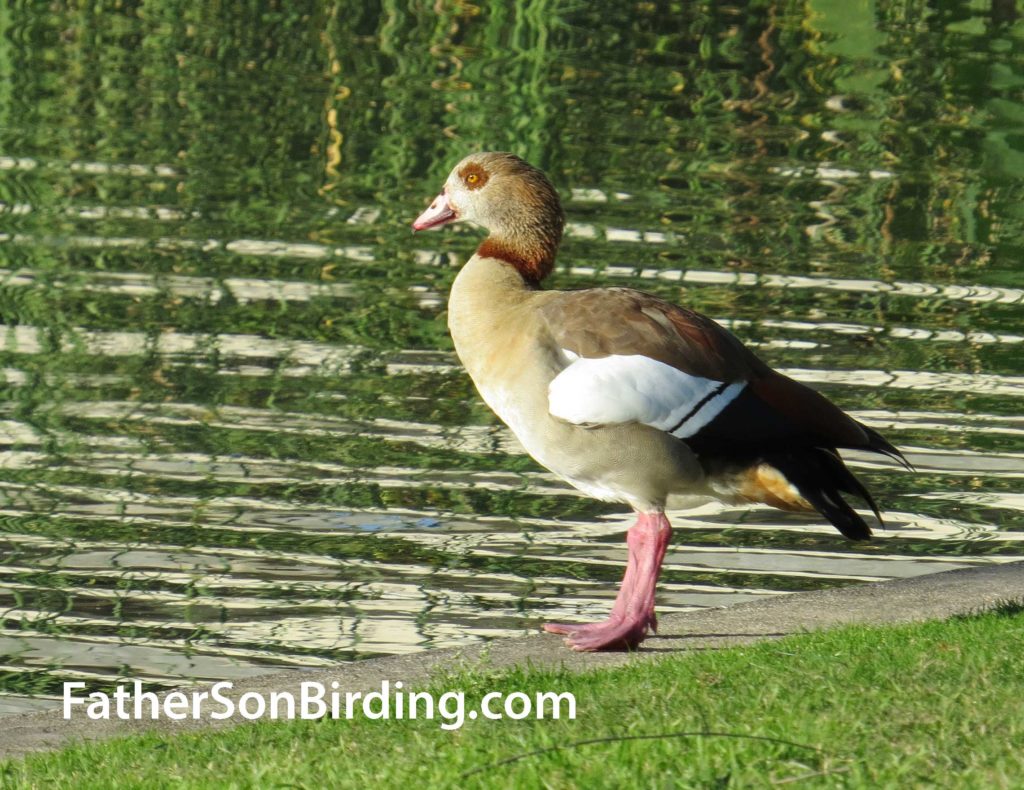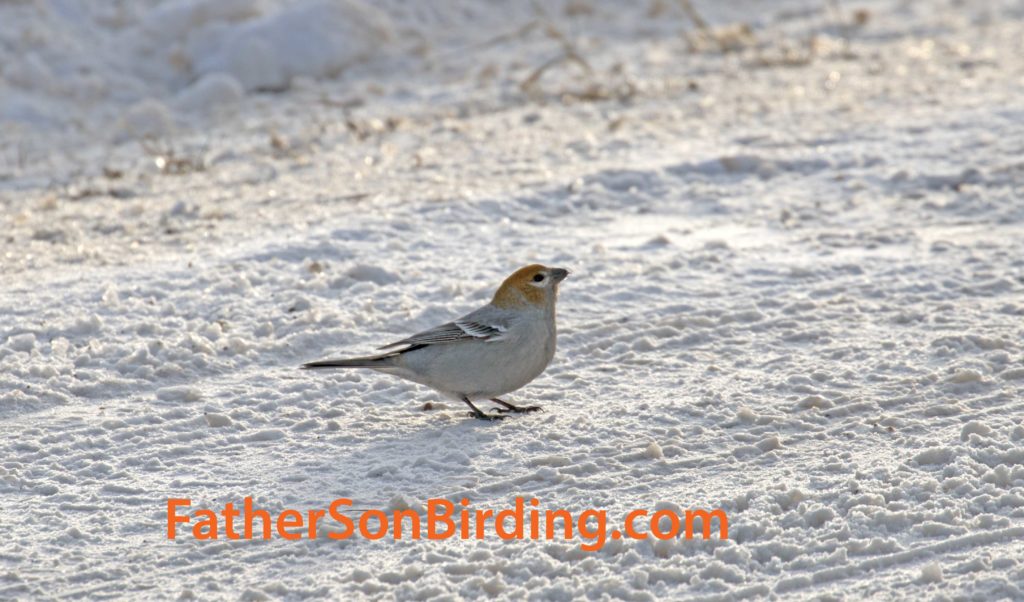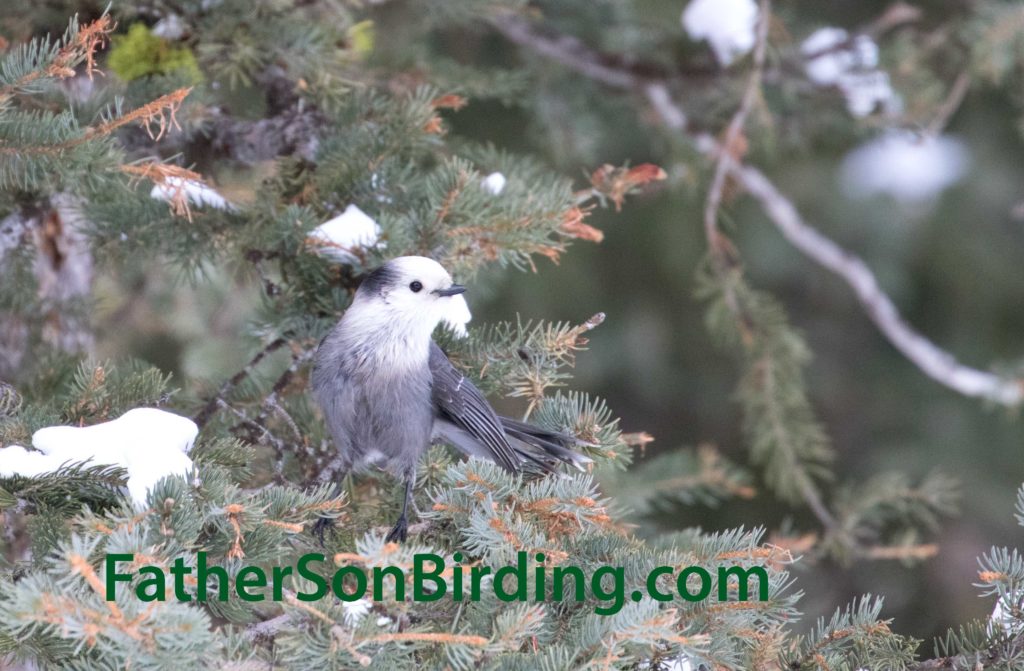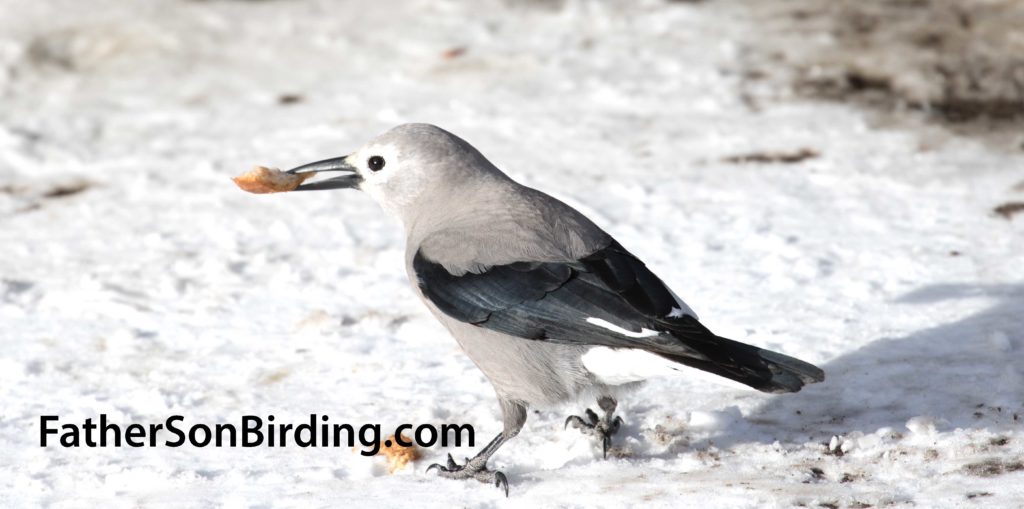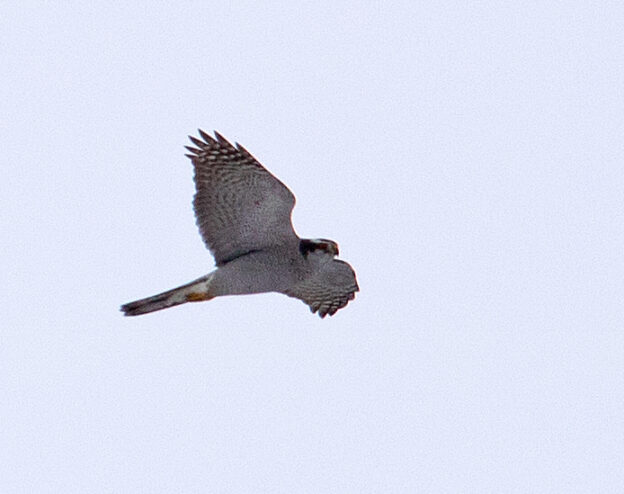Are you enjoying our posts? If so, we’d love it if you subscribe to FatherSonBirding by filling out the box down in the right-hand column—and urge your friends to sign up too :)!
On Saturday, April 20th, my dad and I headed out to Five Valleys Land Trust’s Rock Creek Property, our truck full of plants and shovels. I had completed my Eagle Scout Project on this property last year. For my project I had planted about 30 native plants in an enclosure, on a part of the property dominated mainly by invasive grasses and the grasshoppers that fed on them.
We brought five cottonwoods to replace dead plants and to our surprise only used three of them—the majority of our plants were healthy! We planted the other two trees inside Five Valleys’ much larger enclosure, where about thirty volunteers had gathered to weed the area around the large pond.
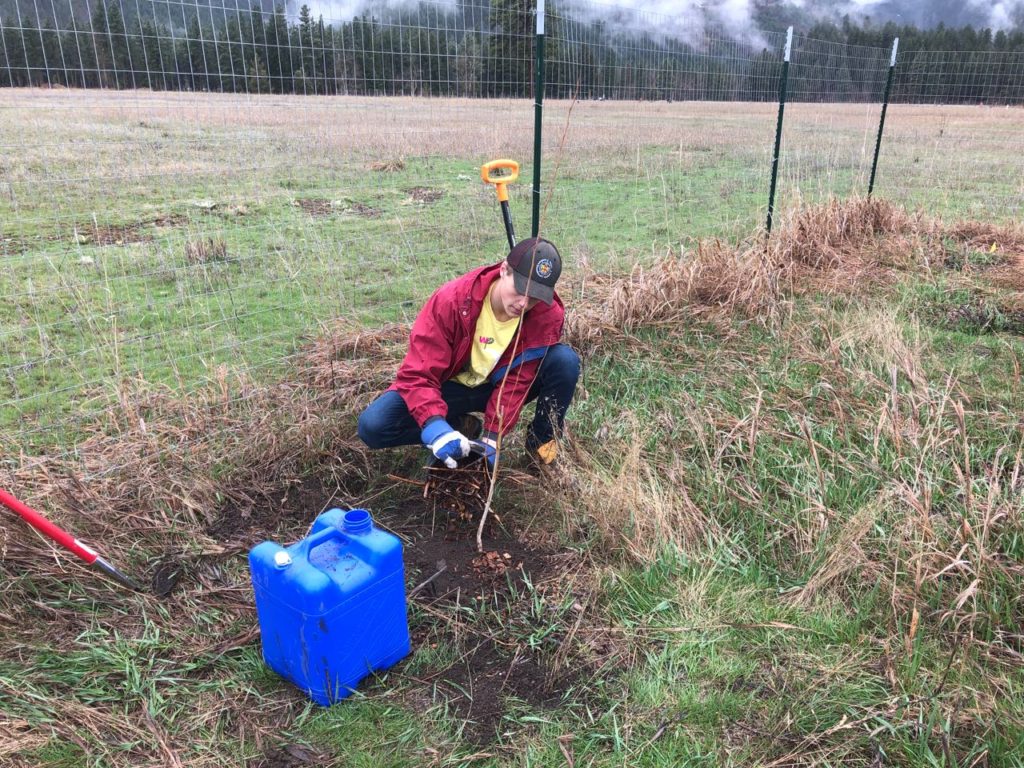
As we finished putting our trees in, I heard an obnoxious call. I looked up to see an excited tuxedo-colored bird with bright pink legs—a Black-necked Stilt! We knew it was shorebird migration season, but we hadn’t expected to see anything, let alone a rare Western Montana migrant! On the pond we also tallied three Ruddy Ducks, another Year Bird.
We then put down our tools and picked up our binoculars to wander the edges of the property, where all the best habitat was. At the Clark Fork River, we found a large flock of migrating swallows zipping inches above the water. The main members of the flock were Tree and Violet-Green, but we also managed to spot some rarities: a few Northern Rough-winged Swallows, one Barn and one Cliff! The day was already shaping up to be a rare one.

Next we explored the flooded riparian area in the back of the property. We had seen a Pacific Wren and several Ruby-crowned Kinglets here in the fall, as well as our first Yellow-rumped Warbler of 2018, so we excitedly scanned the shrubs and trees. Sure enough, movement caught our eye. Two Lincoln’s Sparrows foraged in the brush, another great spring pick-up! As we reached the very edge of what Five Valleys owned, we flushed two Green-winged Teals that had been hiding along the shore.
As we made our way back to the car, I spotted movement in a patch of trees up ahead. Upon further investigation, we discovered a Ruby-crowned Kinglet and a brilliant male Yellow-rumped Warbler, both firsts for the year. They hung out in a large mixed flock that also included White- and Red-breasted Nuthatches and Black-capped and Mountain Chickadees. But the flock wasn’t done. Suddenly, a bright dandelion-yellow bird hopped into view. It danced through the branches in front of us, displaying its light gray head, white eye-ring, yellow throat and red cap. It was our best look ever at a Nashville Warbler!
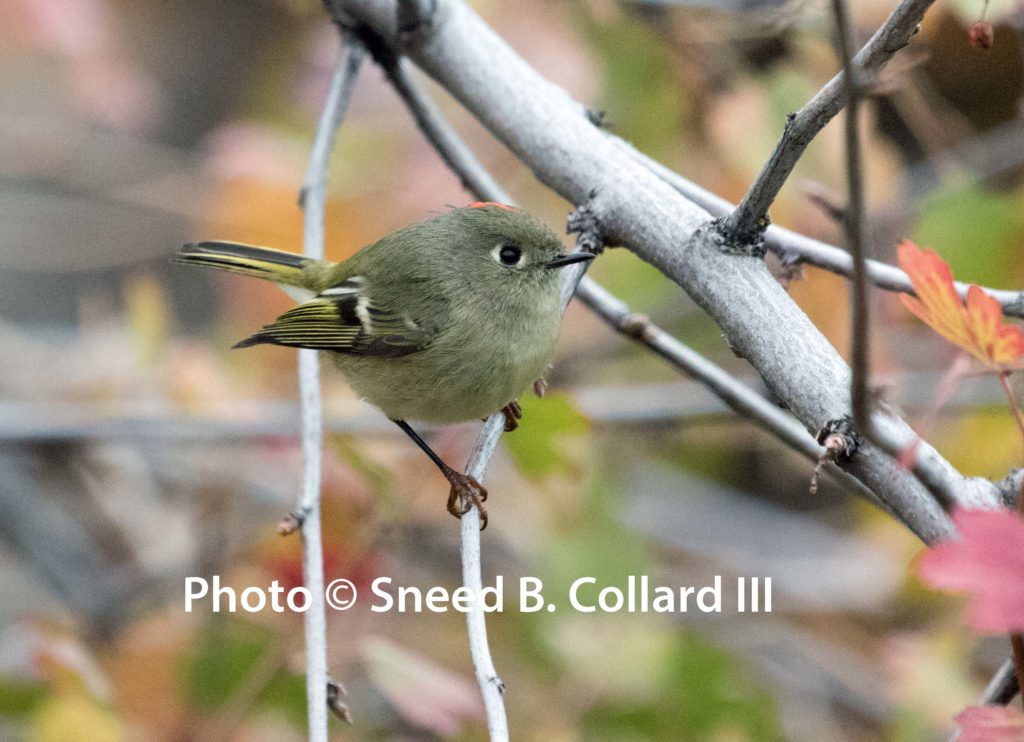
Back at the barn, we ate with the volunteers, led by Jenny Tollefson, who was also my Five Valleys Eagle project contact. We had put in good work and been rewarded with epic finds. I could only imagine what the property would become when the plants I and others had put in grew up to create even more habitat for the birds of the area.

